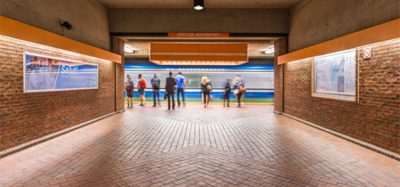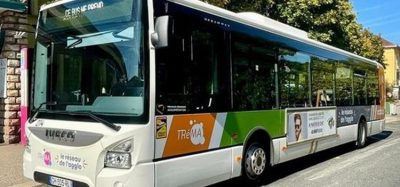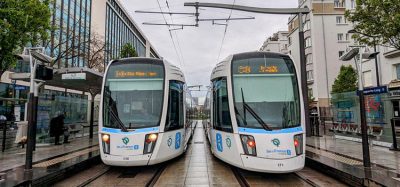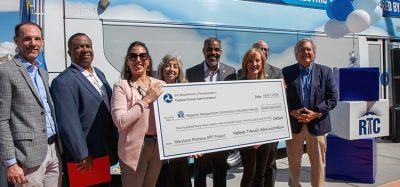Renewal and development in Budapest
- Like
- Digg
- Del
- Tumblr
- VKontakte
- Buffer
- Love This
- Odnoklassniki
- Meneame
- Blogger
- Amazon
- Yahoo Mail
- Gmail
- AOL
- Newsvine
- HackerNews
- Evernote
- MySpace
- Mail.ru
- Viadeo
- Line
- Comments
- Yummly
- SMS
- Viber
- Telegram
- Subscribe
- Skype
- Facebook Messenger
- Kakao
- LiveJournal
- Yammer
- Edgar
- Fintel
- Mix
- Instapaper
- Copy Link
Posted: 22 December 2014 | Tibor Bolla, CEO, BKV Zrt.
Budapest is a well-liked tourist destination ranking 37th among the 100 most popular worldwide cities; 2.7 million tourists choose to visit each year. And with a city-population rising to 1.7 million in 2013 (2.5 million within the suburbs), Hungary’s capital is quickly growing. BKV Zrt. is the main local public transport operating company for the city, and its CEO, Tibor Bolla, outlines how renewal of vehicles and expanding infrastructure is contributing to success.
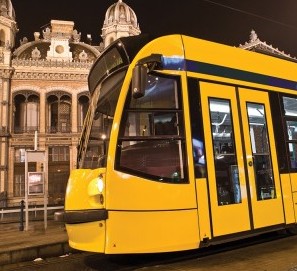

BKV Zrt. provides public passenger transport services by bus, rail and boat within and outside the administrative zone of Budapest according to the current public service contract. Our company operates five major modes – bus, tram, metro, HÉV-suburban railway and trolleybus – in an integrated system. Above this it also operates cogwheel tram and – primarily for touristic reasons – a chairlift and funicular service. Overall, our 2,700 vehicles deliver 1.35 billion passengers per year.
Buses (including trolleybuses) have the largest share, with the tram in second place and the Budapest Metro (lines M1, M2, M3 and M4) in third place.
Operating company
BKV is a private limited company with more than 11,000 employees.
On 1 May 2012, BKV became a ‘pure’ operating company and BKK, the Centre for Budapest Transport, took over the transport organisation activities from BKV which includes traffic management, timetabling, traffic co-ordination, passenger information, ticket purchasing, and ticket control. BKK carries out the tasks of strategic planning, development, management, service ordering and controlling in an integrated system that stands in the institutional system structure as the ordering party between the Municipal Government of the Capital and the transport service providers. The operation of the vehicles – including the funicular, chairlift and boats – and the associated infrastructure, maintenance and the connected additional services have remained under the control of BKV.
So, BKV is still an important, indispensable and irreplaceable operating company in the public transport domain of Budapest. At the time of writing this article, we can report results that foresee significant changes during 2014 in the renewal of transport of the capital.
Projects completed and/or still under realisation from European Union funding are implemented in the investment of BKK in close cooperation with BKV as operator, and focus on the most important, most frequented lines.
Modernisation of one of the most significant tram rings (tram line 1) will be completed in 2015: 8.3km of its tracks will be fully reconstructed. Fifteen stops will be made barrier-free thanks to the refurbishment and the overhead line network will also be replaced. Along the additional 5.1km-long section, nine stops will receive a new look. Additionally too, a new 3.2km-long section will be established with five stops and two elevators and a new terminus.
The entire 13.5km-long tram line 3 will be refurbished, with partial renovation and expansion of its power supply network.
An interconnecting tram network will be created on the Buda side: a tram line will connect the Széll Kálmán Square transport hub located in the centre of Buda and Óbuda, the northern city area. The track network on Széll Kálmán Square will be rebuilt and tram line 17 will receive new tracks with barrier-free stops. A tramline will also be built to the north along the bank of the Danube. The reconstruction of the square will make it possible to establish a new end-station for the cogwheel tramline also at Széll Kálmán Square. In all directions barrier-free connections will be established, new escalators and elevators will be installed, the bus terminal and tram stations will be refurbished, and the ratio of green surface will be increased.
Thirty-seven units of new Urbos 3 type trams produced by the Spanish manufacturer CAF will arrive by the end of 2015, increasing the number of low-floor trams in the fleet. In parallel with the arrival of the new vehicles, three tram depots will be revamped and the infrastructure of the concerned tram lines will also be renewed (52 platforms).
Budapest also includes waterborne transportation on the Danube within its overall public transport system1. As the result of a successful project, waterborne transport recently restarted on the river and new modern ports were constructed and some existing ones were modernised.
Budapest’s new M4 metro line which recently opened to the public also stands out as a milestone project from other EU-funded projects due to its size.
The M4 metro line
Opened in March 2014, the M4 metro line has a stunning design and rivals the most beautiful in Europe. Szent Gellért tér Station and Fővám tér Station have both recently won architectural awards. Technical features of the M4 metro line include:
- Automatically controlled vehicles run between the 10 stations in the 7.34km-long twin 5.2m-diameter tunnels
- 15,500 tunnel track metres equipped with third rail
- The network was constructed from UIC 54 railway track material with Vossloh 336 fastenings
- During the construction of the tunnel, 14 Sperolock locking systems and a crossing were installed by using a top-down construction method
- On the surface, 1,632 track metres of third rail type were laid down at the depot and connecting railway track network and 2,472 track metres inside the building
- Metro tracks were connected to the heavy rail network by construction of two groups of alternate crossing and 520m of track.
Total costs of the project amounted to 452.5 billion HUF, out of which 181 billion HUF was financed by the EU Cohesion Fund in 2008. Fifteen new metro trains were manufactured for the line; each has a capacity of 820 passengers and a maximum speed of 80km/h.
Metro line M4 is 100% barrier-free, and special audio and visual signs/equipment, plus escalators and elevators, ensure that all stations can be accessed by all people.
Bus procurement
Our bus fleet went through a significant improvement programme during the last decade. We expanded our bus fleet between 2004 and 2006 when 150 new articulated buses (type Volvo7700A) were put into service (50 buses each year) and we replaced many overrun buses which were much older than their useful lifetime.
Since 2009, we have procured a number of used buses which we have found to be much more cost-effective than purchasing new vehicles. We initially bought 32 articulated VanHool buses and early experience of them has proved worthwhile. After that initial procurement, we also went on to purchase:
- 14 single VanHool A300 and A330
- 40 single Mercedes Citaro
- 38 single Volvo 7700
- 25 articulated Volvo 7000A
- 25 articulated VanHool AG300
- 3 midi Solaris Urbino 10
- 3 mini Mercedes Sprinter Cytios.
Despite their ages, these buses had run relatively few kilometres and their aesthetic outlook was excellent. Of additional benefit to us was that they were low-floor, air-conditioned and they were considerably more environmentally-friendly than then vehicles they replaced.
The vehicles went through a ‘localisation’ process to ensure ride-comfort for our passengers and that they of course could fit in with our overall fleet and company design. We equipped them with electronic ticket validating machines and new dynamic passenger information system displays. We believe that the total cost of the procurement, including the localisation process, is more favourable in the long-run than the complete renewal costs of our outdated high-floor buses.
Procurement of used buses has of course allowed us to scrap our outdated 20-year-old buses, which in turn means that we have increased the overall reliability of our fleet. We have been very impressed, and so have our passengers, with the results of purchasing used buses that we will in the future launch further tenders to procure more second-hand buses.
CNG bus
Another of our wider company goals is to contribute to air quality. Over the last two years our company has purchased 49 single, low-floor, compressed natural gas (CNG) driven buses (type VanHool New A330), manufactured between 2004-2008. As part of the project, a new CNG fuelling station began operating in 2014.
If our CNG-operated vehicles continue to run successfully, we will aim to expand our CNG fleet. Furthermore, there is a possibility to convert one of our depots into a pure CNG operation in the future.
PKD buses
Of course, procuring new vehicles is the most effective way to renew a bus fleet.
In 2014, we purchased 18 buses (type IK127V) manufactured in a partially knocked down state (PKD). This is a unique and innovative solution – the basis of this construction is that the vehicles are bought in an interim manufacture phase. We buy the body frame and at the same time the other necessary parts and devices are delivered. Our company performs the mechanical assembling, creates the indoor compartment and painting, under the daily supervision of the manufacturer and through a continuous training programme. As the vehicles are completed it is the manufacturer who puts them into operation (programming the electrical systems, test runs etc.) and into traffic (technical exam).
Alongside our new PKD buses, we have signed a contract to buy a further 15 single buses (type Mercedes Conecto) with an option of an additional 60 vehicles, depending on our financial prospects.
Another BKV development includes the project to manufacture the trolleybus type Ikarus 412GT. We plan to merge some structural elements and equipment of buses and trolleybuses which are due to be scrapped to create a trolleybus which brings numerous advantages. Passengers will get a service which is equal to that of a new vehicle and our company will get a trolleybus which fully fits into daily operation.
The point of the GT (Ganz Trolleybus) conception is to merge the sound frame structure of a bus (we scrap its end-of-life diesel drive) and the drive chain of a trolleybus type IK 280.94 (Ganz) (we scrap its worn frame). The vehicle is being manufactured through optimal use of recoverable parts and material but integrating modern technologies. We create passenger compartments meeting the requirements of the present age, air-condition both the driver’s cab and the passenger area, and technical content includes self-propelled operation, too.
We plan to build two trolleybuses by the end of 2014. After the test run and any correctional work, the prototype should enter into traffic by the beginning of 2015.
Renewal of tram vehicles and tram lines
Our recent major projects include the reconstruction of tram lines. As part of the wider Steindl Imre project, there is the on-going renewal of Kossuth Lajos Square (the square of Parliament), coordinated and implemented by the government. As part of the development, the track and power supply networks of tram line 2 have been reconstructed. The project emerges from other investments and because of the strict timing there are certain expectations to keep the construction site decent, and also in regards to the organisation and management of the successive processes. The tram track realised is also unique: rail strings have anti-gride inserts in the 28m arcs, and 16 units of rail-lubricating equipment have been installed in the cover. The track structure is steel-grooved, poured edilon rail, with special cobbled cover. We completed the test run then put it into operation in March 2014. All present tram car types of Budapest passed through the network, even the heritage trams.
There are still many tasks to complete over the next few years: first of all to renew and to replace the large panel tracks which are justified by the high number of warpings during the spring and the summer period. Structures also need care, depending on their conditions and features: primarily, tram line 41, because the frequent floodings of the nearby brook damaged its bottom and excavated the ballast bed, or the buttress of Hűvösvölgy which needs more attention because vegetation roots have loosened its structure.
Among the BKV properties, there is a significant amount of assets which are older than the lifetime defined by the manufacturer, including track elements too. As a responsible operator we believe it is important to define the operational conditions on a scientific base of how to operate them beyond the lifetime. This work has been completed, we signed a contract with an expert, following a public procurement procedure. The conditions of further operation can be determined primarily by applying diagnostic procedures, and by taking the prescribed limit values into account.
Modernisation of type Tatra T5C5 trams
BKV plans to continue with the modernisation of 240 T5C5 trams which started in 2002. The trams reached their panned lifetime of 30 years.
BKV is keen to take on any initiative which results in more convenient travelling conditions for passengers and which contributes to a more liveable city.
Following its predecessors, BKV – as the company with the longest history in Budapest public transport – believes in renewal and in continuous development. BKV has been committed to quality improvement, and hereby to improving the level of public transport service for almost 150 years.
References
- Eurotransport, Volume 9, Issue 6 2013 – Péter Takács: ‘Budapest integrates new elements in its public transport services’ – eurotransportmagazine.com
The rest of this article is restricted - login or subscribe for free to access
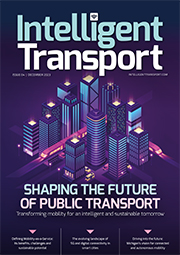

It's completely free to subscribe, and in less than a minute you can continue reading. If you've already subscribed, just login.
Why subscribe? Join our growing community of thousands of industry professionals and gain access to:
- Quarterly issues in print and/or digital format
- Case studies, whitepapers, webinars and industry-leading content
- Breaking news and features
- Our extensive online archive of thousands of articles and years of past issues
All for free!
Click here to Subscribe today Login here
Related topics
Business Models, Infrastructure & Urban Planning
Issue
Issue 6 2014
Related cities
Hungary
Related organisations
BKV Zrt



